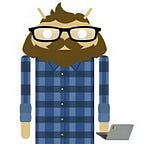Bridging the Digital Literacy Gap
by Bradley Nice, Content Manager at ClickHelp — all-in-one help authoring tool
Technology’s impact on society and the very speed of continuing innovation, transformation, and successive breakthroughs has no historical precedent. Working in the tech industry, we tend to view this as an advantage: creating an ever-upcoming vision of a better life. And the power to improve the world is in the palms of our hands.
But being within this transformation makes it so easy to forget what it’s like to be on the outside of it, as we tend to forget about those left behind. It’s not only localization problems and web accessibility issues: there are simply many more people struggling to keep up with technical innovation than those pushing it forward.
The American Library Association (ALA) defines digital literacy as “the ability to use information and communication technologies to find, evaluate, create, and communicate information, requiring both cognitive and technical skills.” While digital literacy initially focused on digital skills and stand-alone computers, the advent of the internet and the use of social media has caused some of its focus to shift to mobile devices. Digital literacy should be considered to be a part of the path to knowledge.
And the digital literacy gap is what sets people apart, from those who know how to use some electronic device or Internet to those who don’t.
The sad truth is that the digital literacy gap is a painfully prevalent problem, both in developed and developing countries. According to some researches performed in different countries, it turned out that people are less digitally competent than they think they are, which makes the challenge of filling the digital literacy gap even more pressing. Put this information together with the fact that more than 80% of middle-skill jobs demand digital skills, and you’ll see the extent of the problem.
Last year’s unprecedented event (i.e., COVID-19 lockdown) has shown how few people know technology. Take teachers, for instance. Most of them had no previous experience in remote teaching, and teachers worldwide had to suddenly become students.
The digital literacy gap causes digital exclusion on a social level. Ask any pensioner who didn’t know how to use Zoom to communicate with their families during a lockdown. Or anyone who didn’t know how to apply for government help without leaving their home.
There are two complementary solutions to closing the digital literacy gap:
- Bring technology closer to humans.
- Bring humans closer to technology.
Solution 1 is all about designing and building technologies that are easily accessible by those who need them. Its UX design rules are applied to all technology areas, be it hardware, software, or services.
Solution 2 is about education, technical support, and easily obtainable, well-made help resources. In short, it’s about technical communication. And the 2020 crisis confirmed what we already knew: that the quality of technical communication matters.
That’s when technical writers hit the stage, bridging the gap between technology and people — producing help materials for different products, creating technical content for users working remotely, simplifying and structuring documentation for organizations that had their knowledge scattered around dozens of places.
Technical writing is now a must-have for companies of all sizes and industry verticals. Any employee who can convey technical information at work is precious to a company. Remember about that when you’ll think that your job is useless.
Have a nice day!
Bradley Nice, Content Manager at ClickHelp.com — best online documentation tool for SaaS vendors
